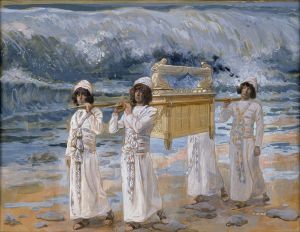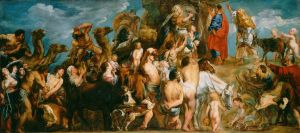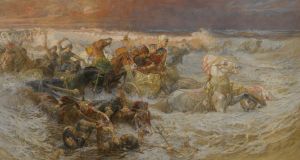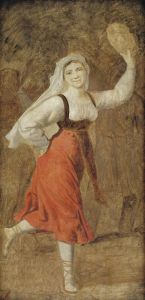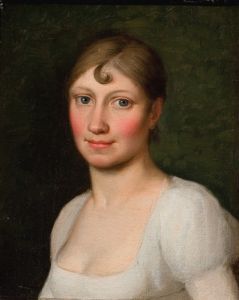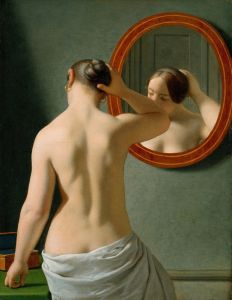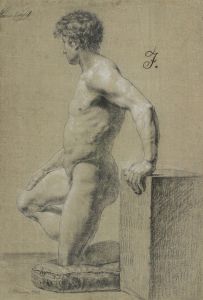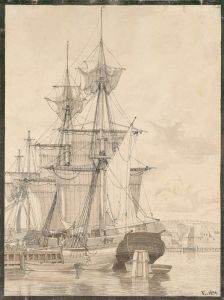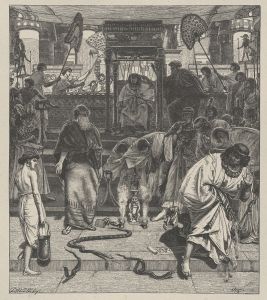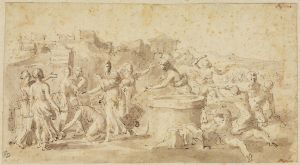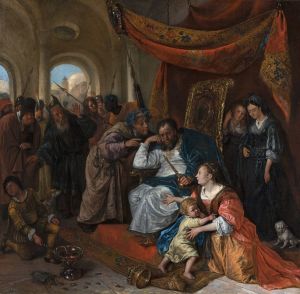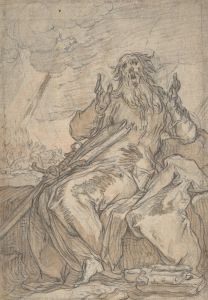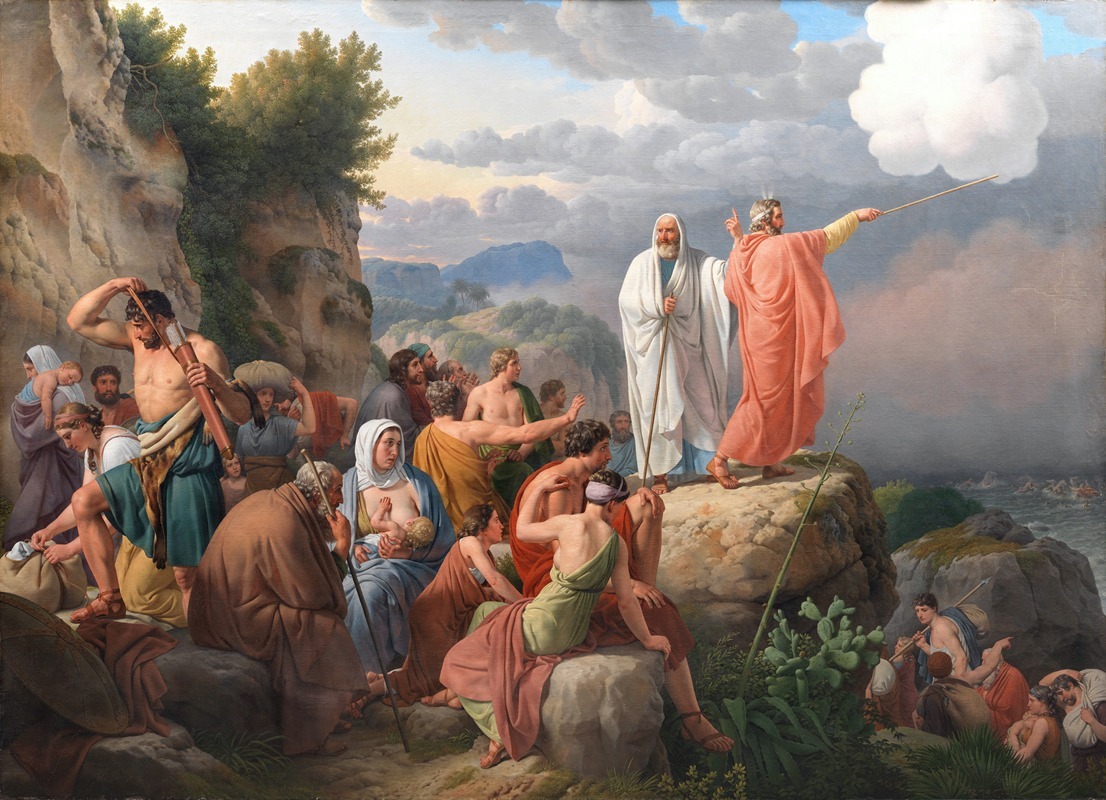
Moses lader Det Røde Hav vende tilbage og Faraos hær oversvømmes
A hand-painted replica of Christoffer Wilhelm Eckersberg’s masterpiece Moses lader Det Røde Hav vende tilbage og Faraos hær oversvømmes, meticulously crafted by professional artists to capture the true essence of the original. Each piece is created with museum-quality canvas and rare mineral pigments, carefully painted by experienced artists with delicate brushstrokes and rich, layered colors to perfectly recreate the texture of the original artwork. Unlike machine-printed reproductions, this hand-painted version brings the painting to life, infused with the artist’s emotions and skill in every stroke. Whether for personal collection or home decoration, it instantly elevates the artistic atmosphere of any space.
Christoffer Wilhelm Eckersberg, often referred to as the "father of Danish painting," was a prominent figure in the Danish Golden Age of painting. Born in 1783, Eckersberg played a crucial role in shaping the art scene in Denmark during the 19th century. His works are known for their meticulous attention to detail and clarity, often depicting historical, religious, and mythological themes.
One of Eckersberg's notable works is "Moses lader Det Røde Hav vende tilbage og Faraos hær oversvømmes," which translates to "Moses Leading the Israelites Across the Red Sea." This painting captures the biblical story from the Book of Exodus, where Moses leads the Israelites out of Egypt and parts the Red Sea to escape Pharaoh's pursuing army. Once the Israelites have crossed safely, Moses allows the sea to return, drowning the Egyptian forces.
Eckersberg's depiction of this dramatic moment is characterized by his precise use of perspective and light, elements that he mastered during his studies in Paris and Rome. His time in Rome, in particular, was influential in his development as an artist, where he was exposed to the works of the great masters and the classical traditions that would inform much of his later work.
The painting reflects Eckersberg's interest in capturing not only the grandeur of the biblical narrative but also the human emotions involved. The composition is carefully structured to convey the tension and drama of the moment. The figures of Moses and the Israelites are rendered with a sense of urgency and movement, while the chaotic waves of the Red Sea add to the painting's dynamic energy.
Eckersberg's work is also noted for its use of light and color to enhance the narrative. In this painting, the contrast between the dark, tumultuous sea and the illuminated figures of Moses and the Israelites serves to highlight the miraculous nature of the event. The use of light not only draws the viewer's attention to the central figures but also creates a sense of depth and realism that is characteristic of Eckersberg's style.
Throughout his career, Eckersberg was dedicated to teaching and mentoring the next generation of artists. As a professor at the Royal Danish Academy of Fine Arts, he influenced many students who would go on to become significant artists in their own right. His emphasis on observation, perspective, and the study of nature became foundational principles in Danish art education.
Eckersberg's "Moses Leading the Israelites Across the Red Sea" is a testament to his skill as a painter and his ability to convey complex narratives through his art. The painting remains an important example of Danish Golden Age painting and continues to be studied and admired for its artistic and historical significance.





